Pragmatic KR
FollowOverview
-
Founded Date September 16, 1991
-
Posted Jobs 0
-
Viewed 3981
Company Description
Five Killer Quora Answers To Pragmatic Kr
 What is Pragmatics?
What is Pragmatics?
 Pragmatics is a term that’s used so frequently that you may think you know what it means. But, like a lot of words in the English language, it’s not easy to understand.
Pragmatics is a term that’s used so frequently that you may think you know what it means. But, like a lot of words in the English language, it’s not easy to understand.
People who are pragmatic are practical and results oriented instead of dreamers with idealistic goals. They know that sometimes they may be forced to compromise their ideals to be successful.
Definition
Pragmatics is an extensive field of study with two main areas of focus. The first is to study what a speaker intends and is attempting to convey through an utterance. The second is to determine how context affects the meaning. The study of pragmatics has been a major aspect of human communication and language for centuries. The scholarly journal, Pragmatics, was the first journal dedicated exclusively to this field.
Pragmatism is a philosophy that challenges foundationalist orthodoxy. It asserts that intuitions are always described through descriptions and concepts. Therefore, we can’t be able to directly experience reality without filtering through our beliefs and worldviews. According to pragmatists, such as Sellars Rorty Putnam and Nelson Goodman we cannot validate theories or worldviews with raw, unadulterated sensual experience.
There are many kinds of pragmatics, which range from the study of speech acts to the study of the theory of politeness. These areas of pragmatics have been examined using a variety of groundbreaking concepts, such as politeness theory, conversational implicature and speech acts. The study of pragmatics is becoming increasingly important as smart machines and augmented realities have enabled more complex interaction with humans.
Some pragmaticists are more extreme than others. Some claim that correspondence theory is wrong and should be discarded. Others are more cautious, and argue that the standard formulation is uninformative and incomplete. Schiller and Rorty for instance belong to one group, while Peirce James and Dewey are in the other.
Scholars have analysed the history and development of pragmatics using the scientometric and bibliometric indicators. The use of these indicators allows the analysis of trends and changes in the field of pragmatics, including the growing importance of linguistic pragmatics in cognitive science. By studying their citations, it is also possible to determine the top researchers in the field. The results of this analysis are shown below. The most prominent scholars are listed below, as are their specializations and the number of citations they have received.
Examples
The pragmatics field is huge and complex. It covers a variety of aspects of human communication including inferences about logical meanings that are based on communication as well as the semiotics of non-verbal communications. It is also linked to other disciplines, like anthropology, sociology, psychology and linguistics. In the latter half of the 20th century, pragmatics grew into an interdisciplinary field, with the influence of anthropological discourse analysis, cognitive-behavioural psychology and linguists.
There are various types of pragmatics. These include linguistic and the clinical pragmatics. The former focuses primarily on the context and use of utterances while the latter is focused on the interactions between the patient and the clinician. Clinical pragmatics is an inter-disciplinary field that has seen rapid growth in recent decades, thanks to advancements in health care and the increasing availability of information on speech disorders.
The word”pragmatic” comes from the Latin pragma which means “to take up”. This term was first used by philosopher John Locke to describe his philosophy of mind. It was later adopted by Charles Sanders Peirce, who called his philosophy pragmatism. Peirce’s philosophy was a response to traditional analytic philosophy, which he believed was unconvincing.
Peirce’s pragmatism was a diverse and broad-based philosophy that was influenced by numerous different disciplines, including mathematics, biology philosophy, sociology and philosophy. It was also influenced by the theories of other philosophers, like Dewey and Mead, who were involved in women’s rights and social work.
The philosophies that are founded on pragmatism might be different, but they all share a common element – the conviction that truth is in the end a matter of to the individual’s perceptions and experience. In the case of linguistic pragmatism this principle applies to grammar, vocabulary pronunciation, and other aspects of a language.
The pragmatic movement has had a significant impact in the fields of anthropology, sociolinguistics, and speech-language pathology. These disciplines have contributed towards the development of the pragmatic theory of language, which has expanded over time to include more aspects of communication. The literature on scholarly research on the subject of pragmatics has also grown in recent years and the number of articles continues to grow. The availability of computer programs that can analyze language usage and aid in understanding human communication has contributed to the development of this field.
Pronunciation
Pragmatics is a philosophical branch of language studies that examines the connection between thought and action. Its objectives include understanding how and what people communicate when they speak, what words mean and the contexts in which they are utilized and whether they are able to serve their intended purpose. Fields of study that are applied to public administration, political science, international relations and leadership studies often incorporate the tenets of pragmatics.
The word”pragmatic” comes from a Latin phrase that translates to “to be practical.” Originally, it was used in a grammatical sense, to refer to a method of studying sentences or words to determine their efficiency and effectiveness. It has also been used in recent times to describe an overall decision-making process that focuses on the practical aspect of things.
Philosophers who believe in pragmatics are distinguished by their ability to evaluate the advantages and disadvantages of various options and choices, as well as their willingness to compromise and sacrifice certain ideas in order to reach an ideal objective. They are objective and adopt a logical and rational approach to making decisions.
Classical pragmatists include William James and John Dewey Both of them are considered the founders of American philosophy. They were influenced in the movement by Charles S. Peirce, who renamed his own doctrine pragmatics to differentiate it from the philosophies of James and Dewey. Contemporary philosophers who have created an elaborate analytic model of pragmatics include Richard Rorty, Susan Haack and William Stuhr.
Other schools of thought share some similarities with pragmatism including logical positivism, conventional language philosophy and behaviorism in psychology and sociology. Logical positivism uses a verification criterion for meaning that is designed to remove metaphysics from the philosophical landscape, however it doesn’t emphasize the importance of action in the same way that pragmatism does.
Pragmatics is a key component in the study of natural language and is a vital aspect of business communication. Leaders must be able assess situations and adjust their communication to maximize effectiveness of their meetings, sales pitches and negotiations. To improve this ability, it’s essential to listen to native speakers and practice with pronunciation tools, such as Promova.
Usage
A person who is pragmatic is one who puts facts before ideals. They can think about what is feasible and how it could impact other people. This kind of person is usually compared with an idealist, who’s ideas are regarded as more valuable and based on principles. For instance the term “politician” could refer to himself as pragmatic, stating that he is willing to take the viewpoints of all sides into consideration.
It is essential that children develop Pragmatic KR language skills, particularly when they interact with their parents, teachers and peers. These skills let them communicate their preferences and needs and participate in games and resolve disagreements. They can also communicate in more sophisticated ways through metaphors and irony. Children develop these skills in the early years of their lives however, they are refined throughout their childhood and adolescence, as they interact with their surroundings.
Many people mistakenly think of the term “pragmatism” in relation to philosophy. However, it is actually defined as the use of practical considerations when making decisions. It is also the name of a philosophical movement that emphasizes this type of approach.
The term pragmatic is used in a variety of fields that include education and law. It is also used in linguistics to describe the social aspects of communication that are grounded in context and culture. It is different from other aspects of language, like phonology and syntax, which are less dependent upon social context.
In order to teach and evaluate these elements effectively, it is essential to understand how they affect the language and speech. One of the most popular aspects of pragmatic language is the use of pragmatic markers (PMs). PMs are lexical terms that signal the intended meaning of a message and indicate the way in which an individual can interpret it. They include, for example you know, and okay. They are generally utilized at high levels and are employed on a somewhat unconscious level. PMs serve social, textual and metapragmatic purposes (Gordon, 2007).
The study of pragmatic language development has a long-standing history and is currently a popular research area. The research is multidisciplinary, and the most referenced journals in this field are the Journal of Pragmatics, Intercultural Pragmatics and the Journal of English Second Language Acquisition. VOSviewer created an interactive network visualization of these journals, which shows the most-cited authors and topics related to pragmatics language development. The colour code indicates what type of topic is being discussed: yellow indicates pragmatic competency blue is theory and mind, and green is neuropragmatics and clinical.
